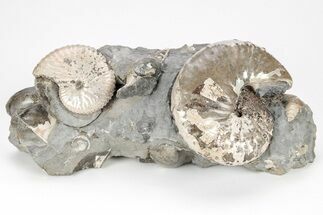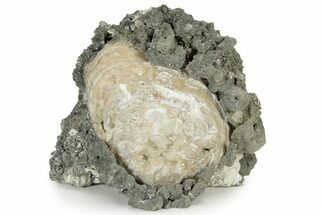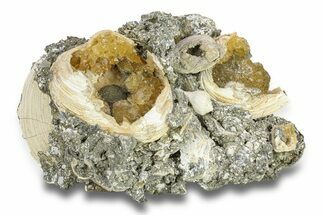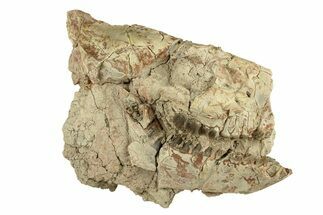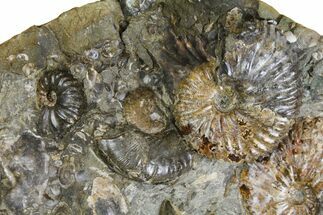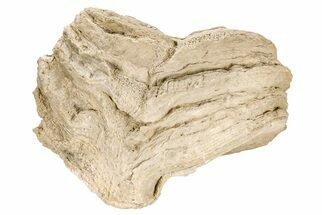This Specimen has been sold.
Two Iridescent Fossil Ammonites (Discoscaphites) - South Dakota
These are two (Discoscaphites conradi) ammonites from the Fox Hills Formation of South Dakota. The iridescence of the outer shells creates a colorful display. This specimen has been well prepared and remains attached to the rock in which it was found. The rock contains a variety of other small marine bivalves and measures 6.4".
Ammonites were predatory cephalopod mollusks that resembled squids with spiral shells. They are more closely related to living octopuses, though their shells resemble that of nautilus species. True ammonites appeared in the fossil record about 240 million years ago during the Triassic Period. The last lineages disappeared 65 million years ago at the end of the Cretaceous.
SPECIES
Discoscaphites conradi
AGE
LOCATION
North Central, South Dakota
FORMATION
Fox Hills Formation
SIZE
2.1" ammonite, 6.4 x 4.4" rock
CATEGORY
SUB CATEGORY
ITEM
#137288
We guarantee the authenticity of all of our
specimens. Read more about our
Authenticity Guarantee.
specimens. Read more about our
Authenticity Guarantee.
 Reviews
Reviews

